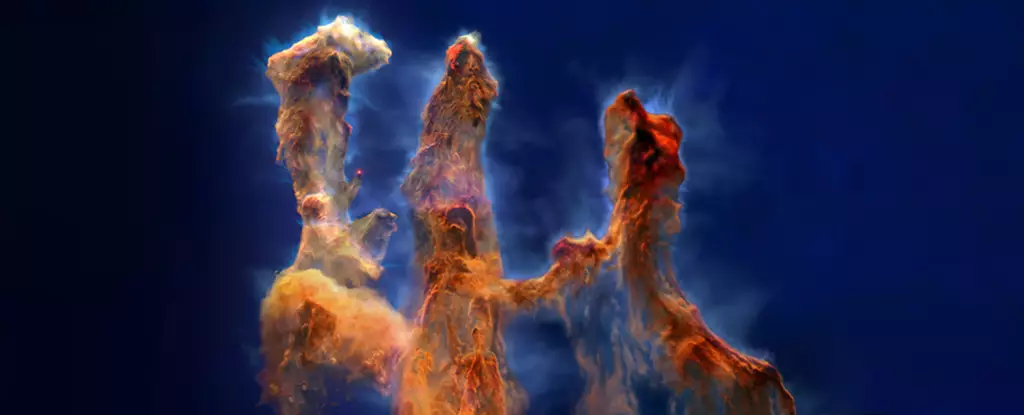In April 1995, a spectacular image known as the ‘Pillars of Creation’ captured the attention of the world. This iconic image, taken by the Hubble Space Telescope, showcased the stunning beauty of the Eagle Nebula, where the pillars are located. These pillars, composed mainly of cool molecular hydrogen and dust, are being eroded by the powerful forces of winds and ultraviolet radiation emitted by nearby hot, young stars.
While the Hubble Space Telescope initially captured images of the Eagle Nebula and its pillars, the James Webb Telescope has now joined in this astronomical feat. By combining data from both telescopes, astronomers have created a mesmerizing 3D animation that takes viewers on a captivating journey through the structures of the pillars. This collaboration between Hubble and Webb showcases the power of combining observations from different space telescopes to deliver a more detailed view of the universe.
The new 3D visualization not only offers viewers a breathtaking tour of the Pillars of Creation but also provides insights into various stages of star formation. From the central pillar, where an infant protostar glows red in the infrared image, to the left pillar with a diagonal jet of material ejected from a newborn star, viewers can witness the intricate processes of star birth and evolution. This immersive experience allows for a deeper understanding of the cosmic phenomena happening within the nebula.
Beyond its artistic and scientific significance, the 3D visualization of the Pillars of Creation has practical applications as well. One such benefit is the creation of a 3D printable model of the pillars. The data collected from the scientific study led by Anna McLeod has been converted into an STL file format, allowing enthusiasts to download and print their own replica at home using 3D printers. This not only sparks interest among astronomy enthusiasts but also serves as a valuable educational tool for schools and science education programs.
The collaboration between the Hubble and Webb telescopes has resulted in a mesmerizing 3D visualization of the Pillars of Creation, offering viewers a unique insight into the beauty and complexity of the universe. This innovative approach to showcasing astronomical phenomena not only enhances our understanding of star formation but also provides a platform for educational engagement and scientific exploration. As we continue to unravel the mysteries of the cosmos, these technological advancements allow us to appreciate the wonders of the universe in a whole new dimension.



Leave a Reply